The Impact of Fake Bricks Exposed at Corners
This past week, we started looking at a masonry wall, clad with a fake brick covering. Even if the substrate beyond the surface applied masonry built with a studwork, commonly found in commercial light gauge metal framing, the exterior cladding is still similar to masonry because the aesthetic “brick” is actually more like a tile, yet possibly actually made with a kiln fired clay.
These visual differences might be slightly subtle to an untrained eye, but they make a really big difference in the repointing process. Pressd bricks were often fired at a much higher temperature than common bricks and this difference made the brick able to handle mortar that was also much stronger.
In general, the butter joints made to set and adhere the pressed brick were often made with a higher ratio of lime to sand in the mortar. This particular distinction makes a really big difference in repointing, now, in modern times. To be clear, we always recommend using a lime mortar in the pointing process for historic brick buildings, but the amount of lime can actually be higher when repointing pressed brick, in most cases.
When you look closer at the brick of this particular building you can see that these mortar joints are very thick, much thicker than you would find with a historic pressed brick and about the same or similar thickness that you might find with a historic common brick. Right away though, you might notice that this mortar visually resembles the more you find where Portland cement has been used.
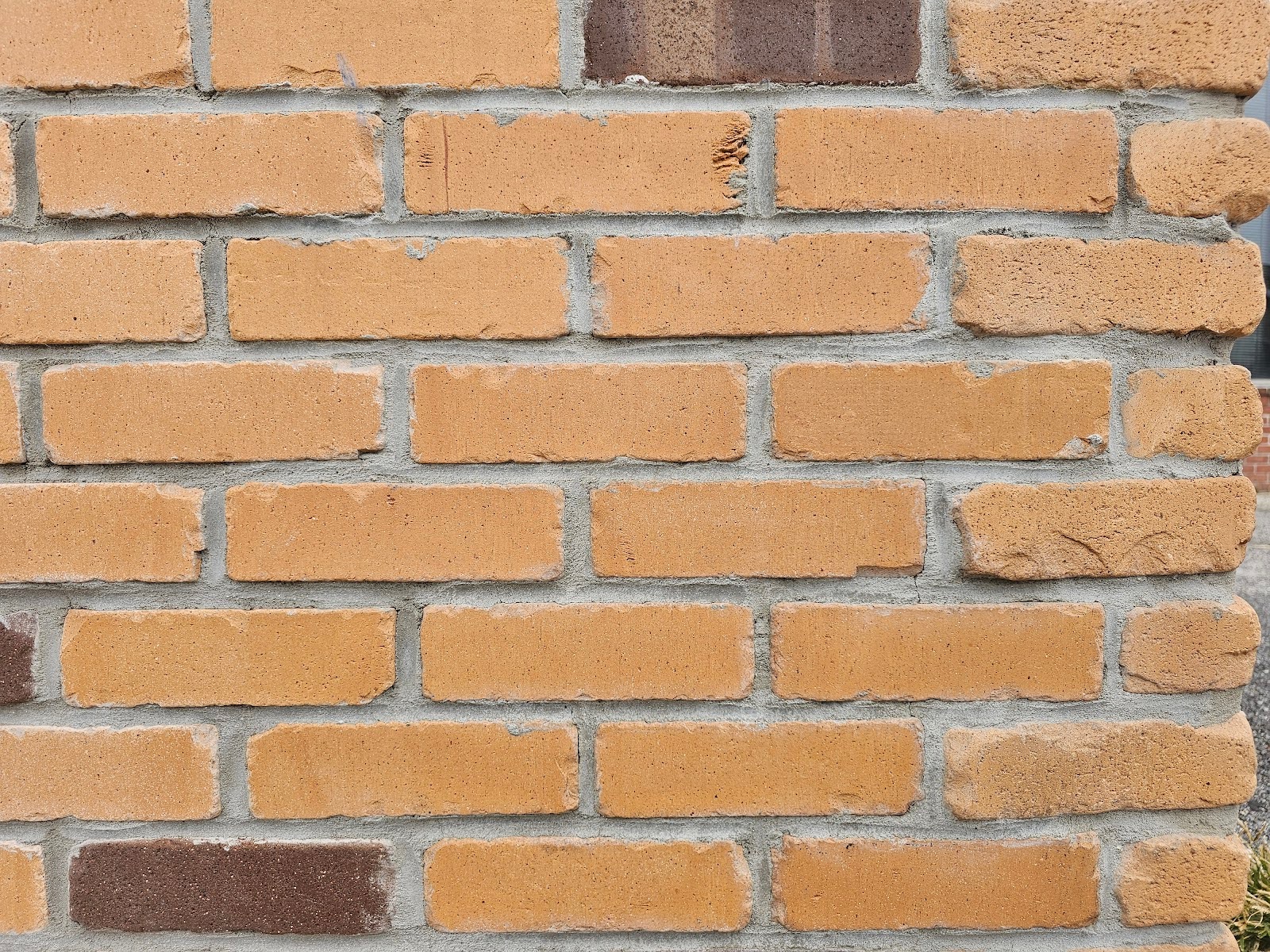
Also, as you can see the photo below, one of the biggest differences between this type of brick and historic brick is that historic brick is generally much redder, the clays in the soils in our area generally have more iron and therefore, when the bricks are fired in a kiln, they generally come out much better. The cone or temperature at which the historic bricks were fired also affects the color, but here you can see even if fired at a higher temperature the particular clay used in this brick has a much lighter color.
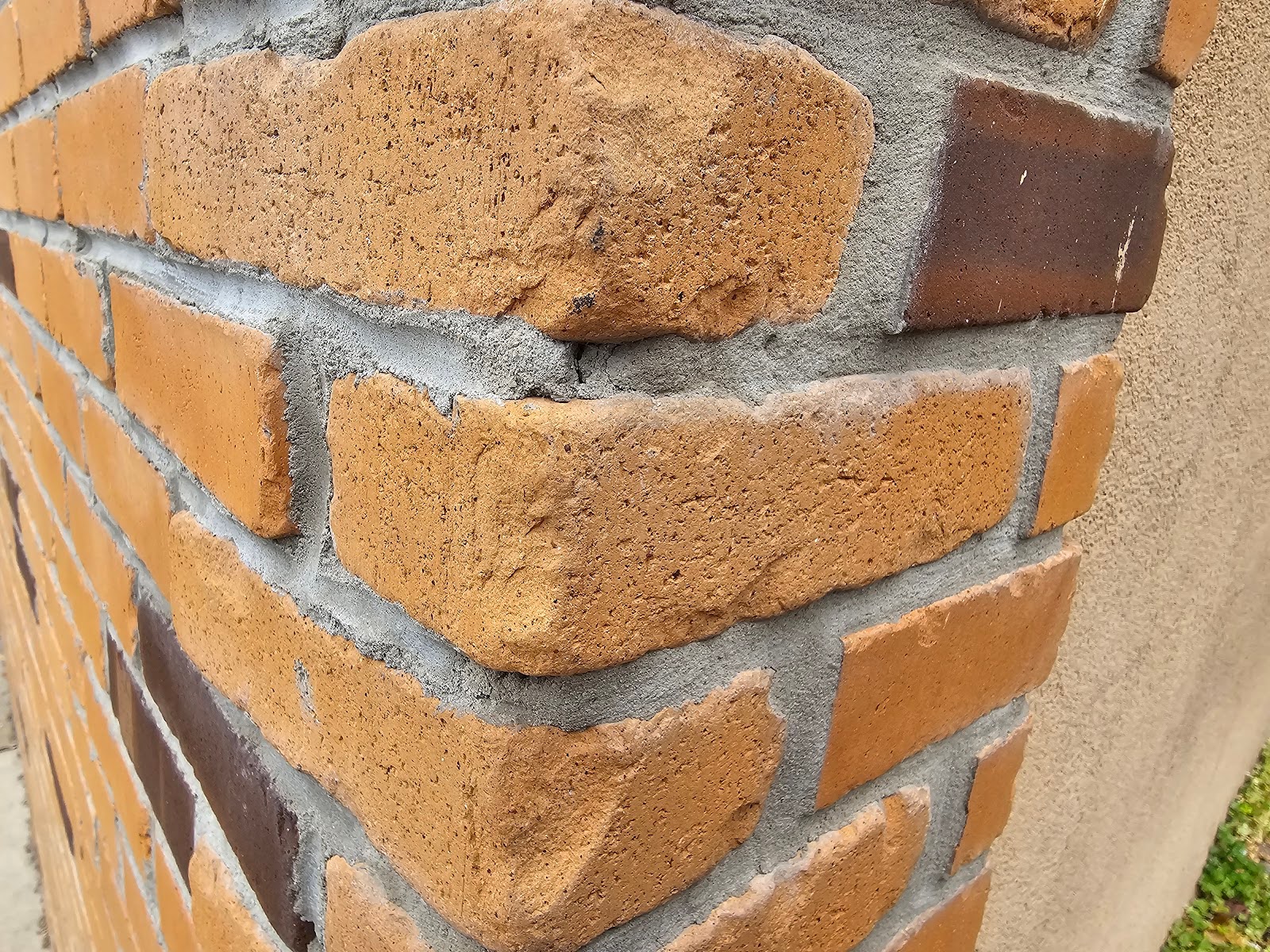
As you look at the picture above, you may notice that there is slight damage and chips or spalling at the corner of the bricks, but this is possibly a type of faux rustication.
The picture below is much more revealing though. This picture is farther around that same corner of the wall but looking at the back edge of the bricks at the corner. You can see that these bricks are actually just a thin veneer application, not an actual solid brick. And actual solid brick would not have a separation or void space, filled with mortar.
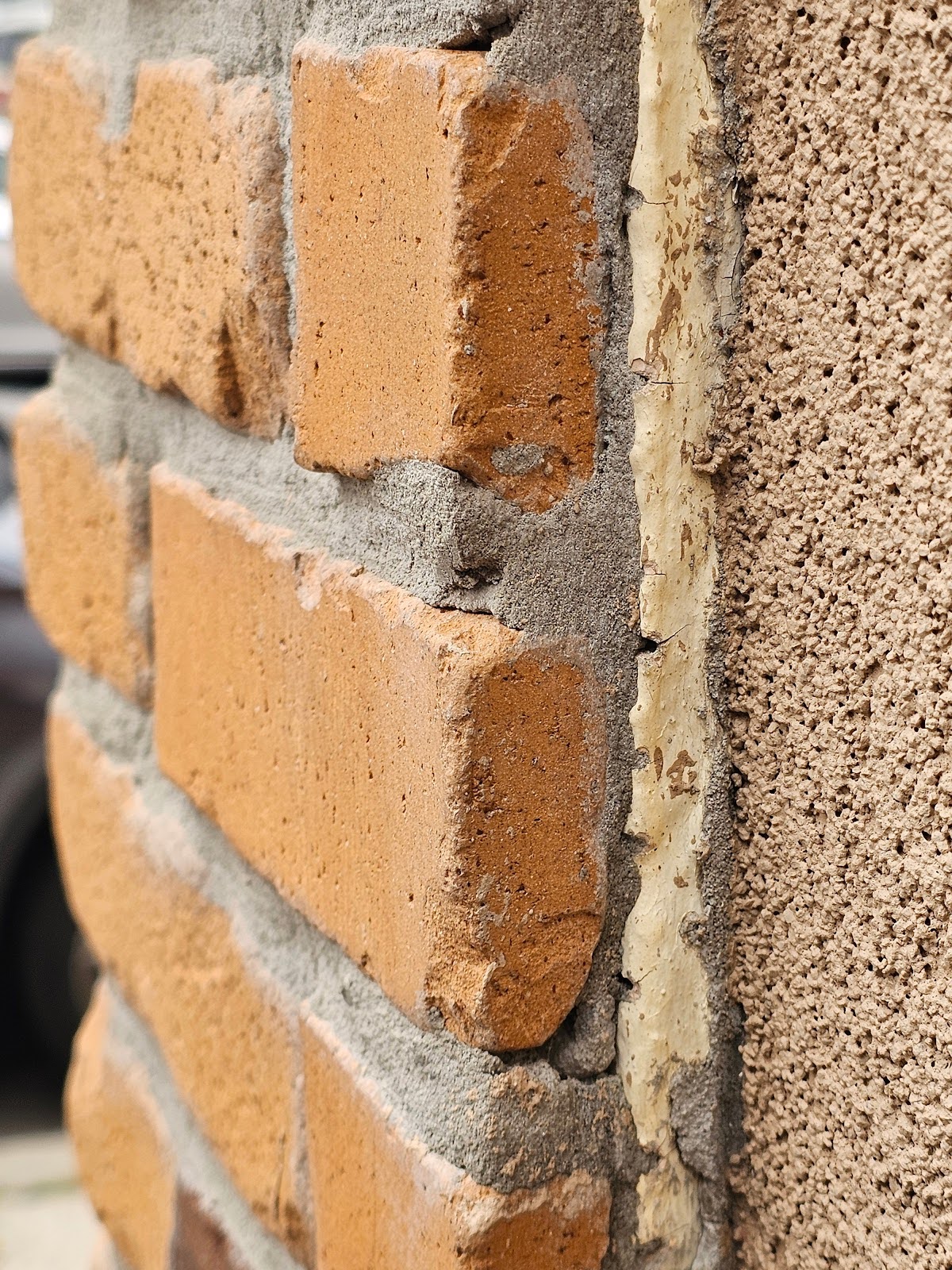
There are more than one type of fake veneer bricks. Some do not have corner units. Corner units like this are much more expensive than the remainder of the field brick for this fake type of tile essentially made it look like a brick, but this actually looks much more convincing. Without this type of continuous corner brick, it will look like each alternating course has a joint or miter at the corner of the brick which would almost never be the case if real bricks were used. Although we spotted this detail and determined that the application on the surface was actually fake, it almost fooled us because it’s a near convincing forgery.
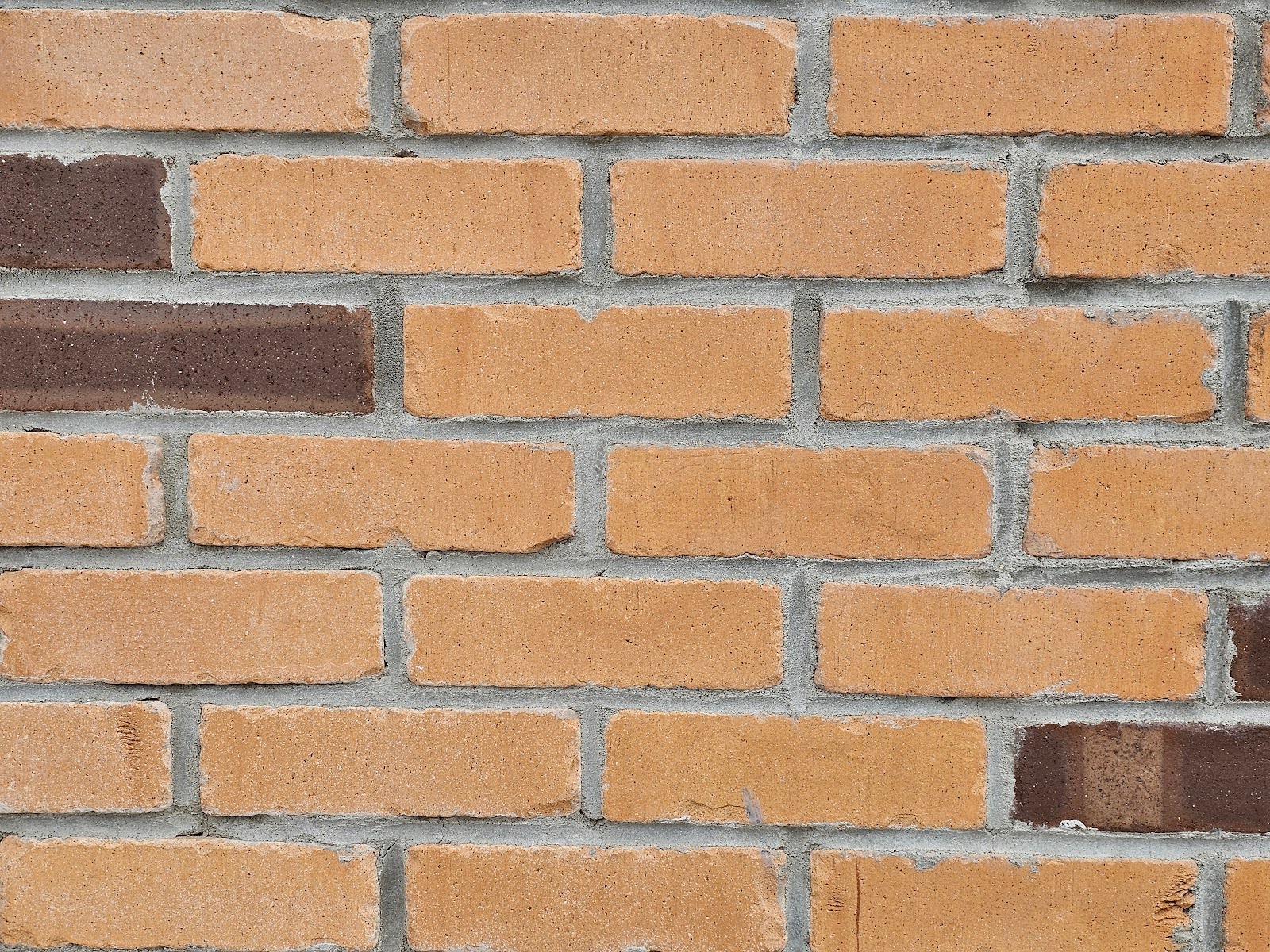
Here, in the picture above and below, looking at the main field of the bricks, it’s hard for anyone to argue that it’s not real, but we picked the difference up by looking around the corner at the edge.
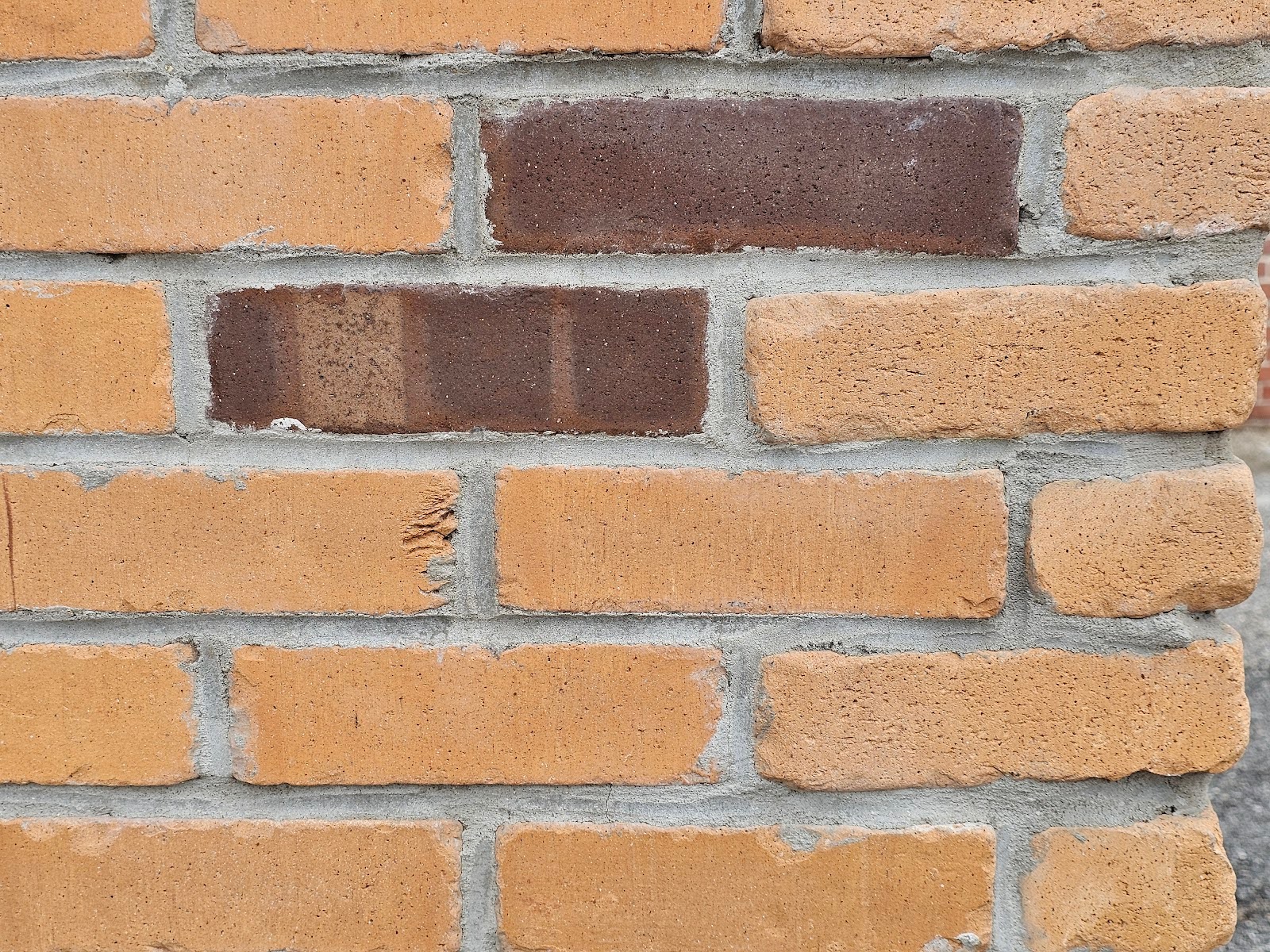
Some additional pictures, of different angles of this wall follow below. Take a look at each of these pictures and see if you can spot the differences. It’s fake, in the end, yet it’s hard to see the difference.

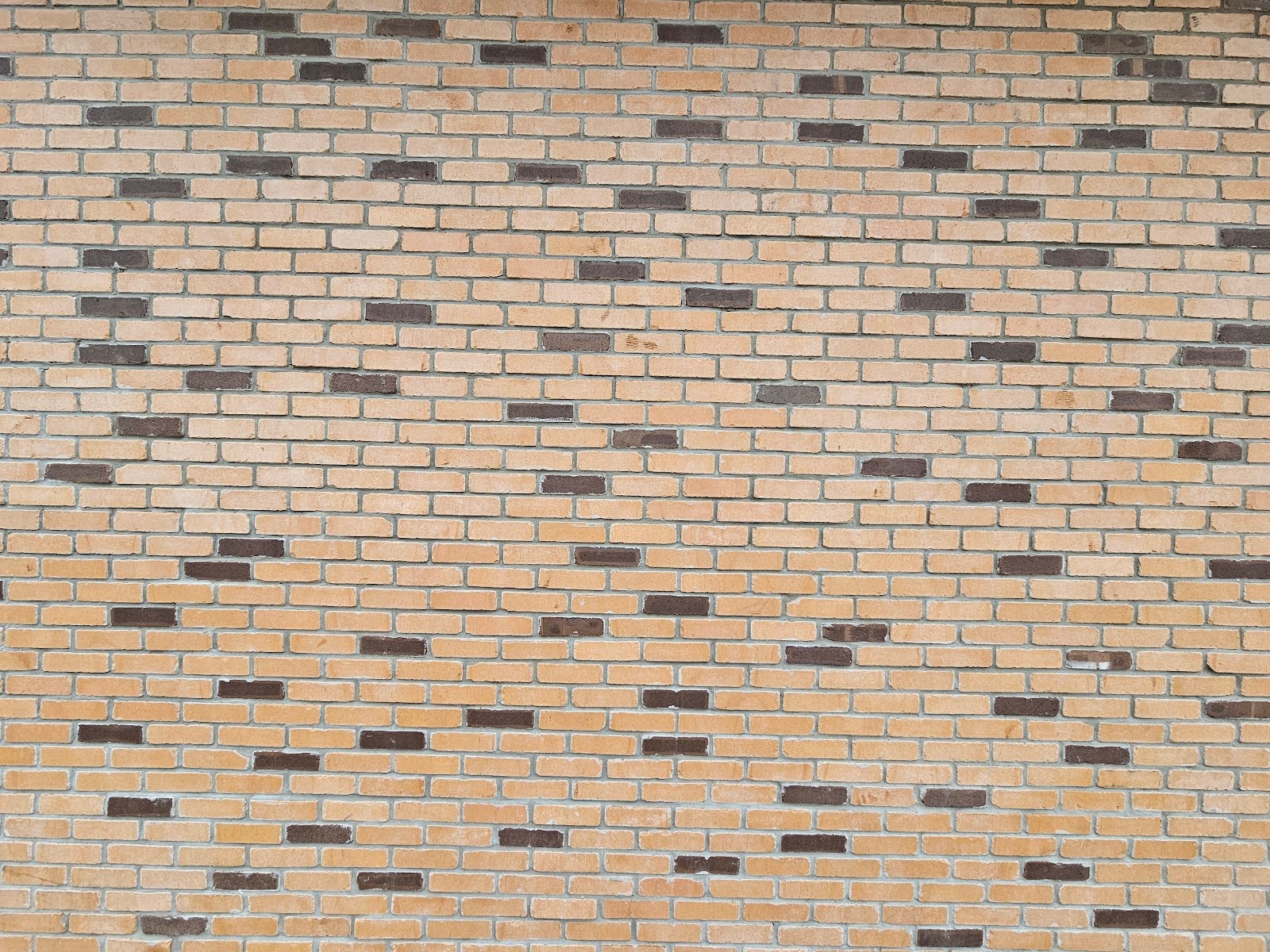
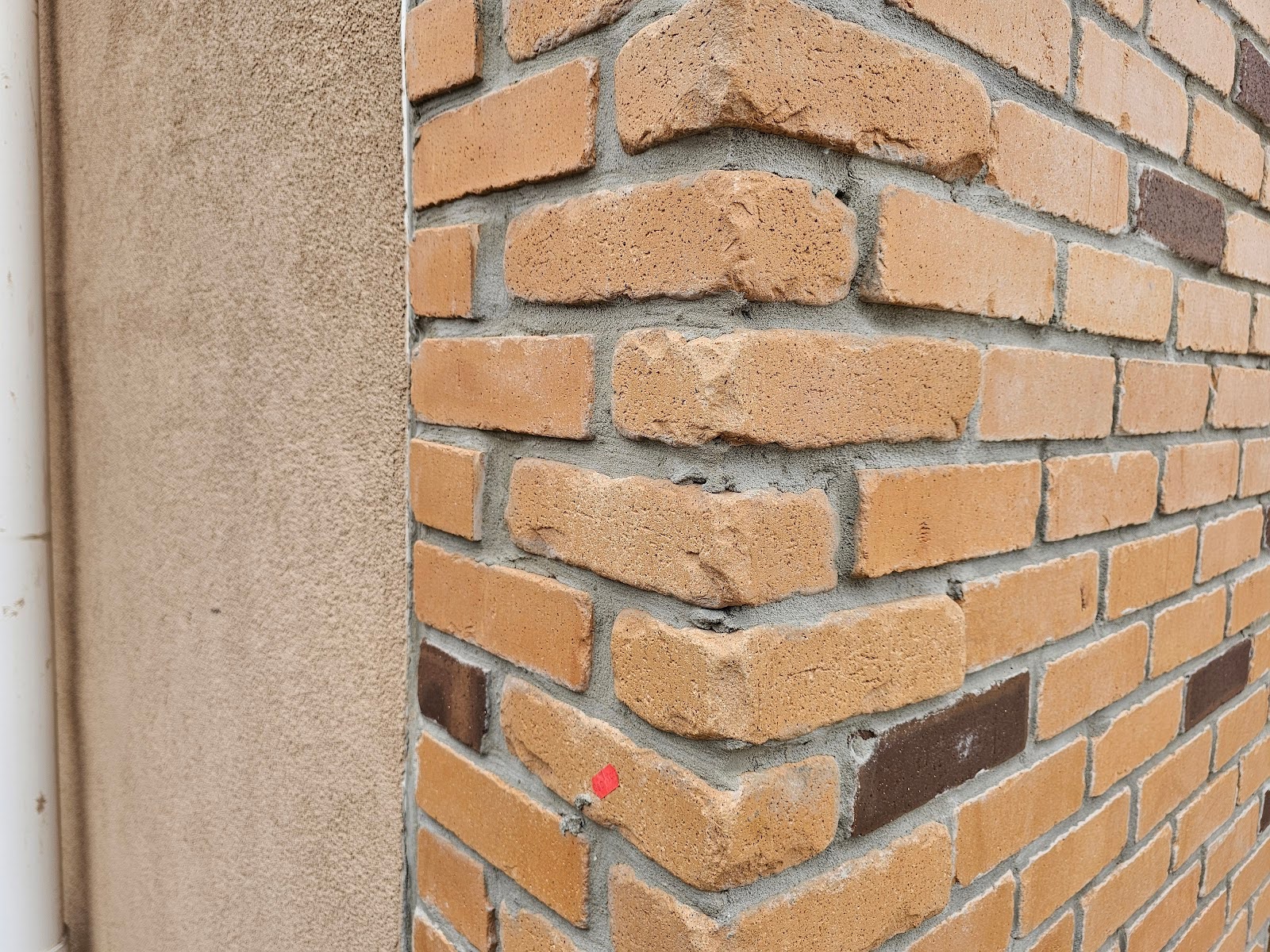
Our company, Dupont Tuckpointing and Masonry, specializes in masonry restoration, historic brick repointing, and tuckpointing services in the Washington D.C. area. These buildings are uniquely historic, and their preservation requires skilled masons who are technically trained in the best practices and knowledge of proper restoration techniques.
We understand the significance of maintaining the architectural integrity of these historic structures, and our team of experienced professionals is dedicated to delivering exceptional craftsmanship. Whether you require masonry restoration, tuckpointing, or brick repointing services, we are here to help.
At Dupont Tuckpointing and Masonry, we take pride in our work and strive to ensure that every project is executed with the utmost care and attention to detail. We are committed to preserving the rich heritage of Washington D.C.’s built environment for generations to come.
If you have any questions or needs regarding masonry restoration, historic brick repointing, or tuckpointing services, please do not hesitate to reach out to us. We would be delighted to assist you and provide you with the expertise and quality workmanship that your historic property deserves.
You can reach us by telephone at (202) 796-7644 and you can reach us by email from the contact form on our website at https://duponttuckpointingmasonrydc.com/contact-us/.




